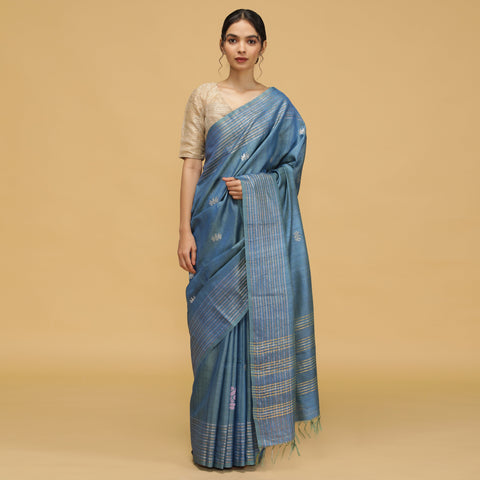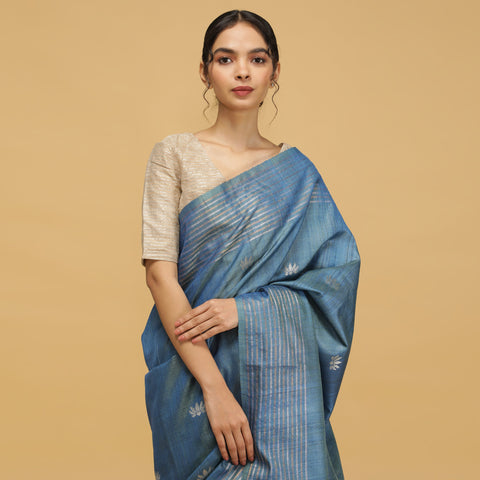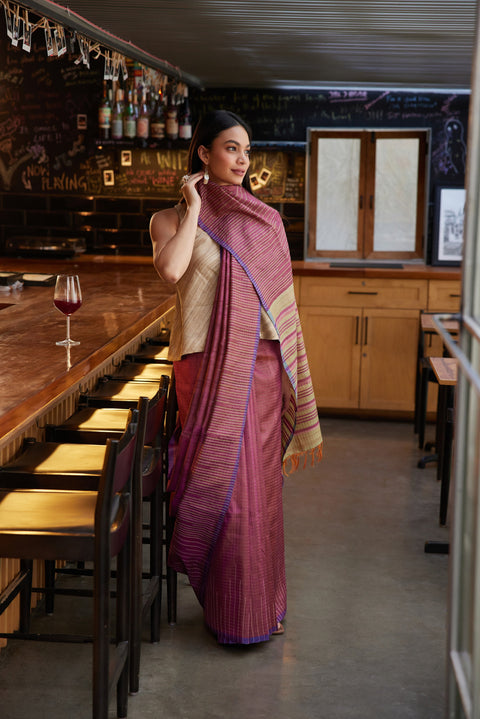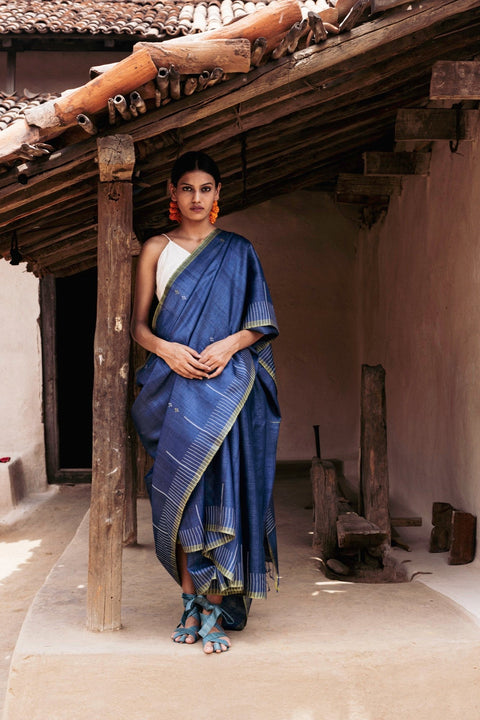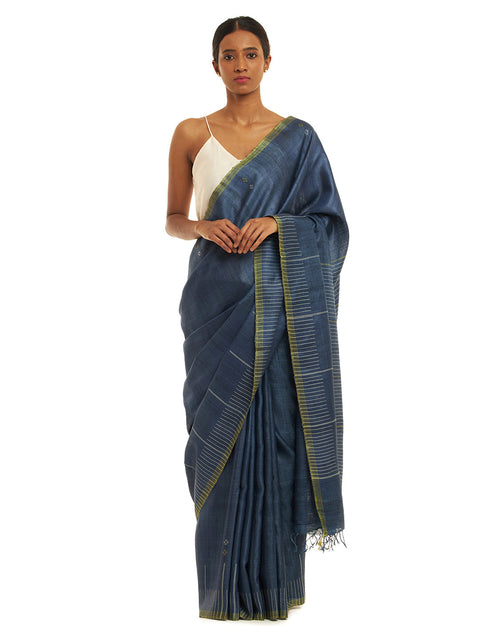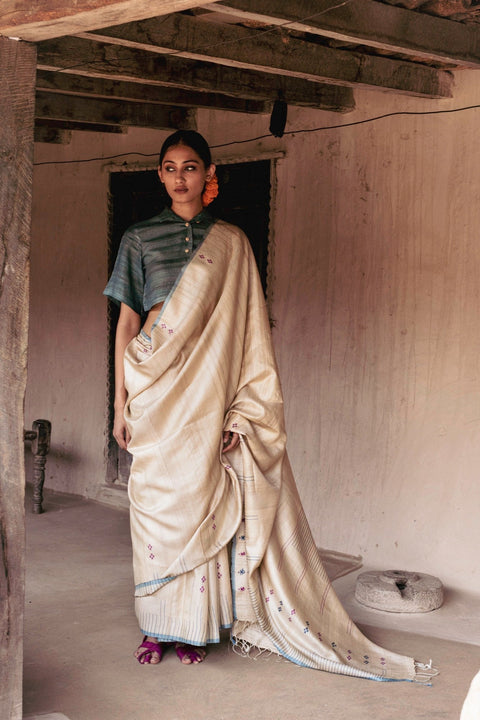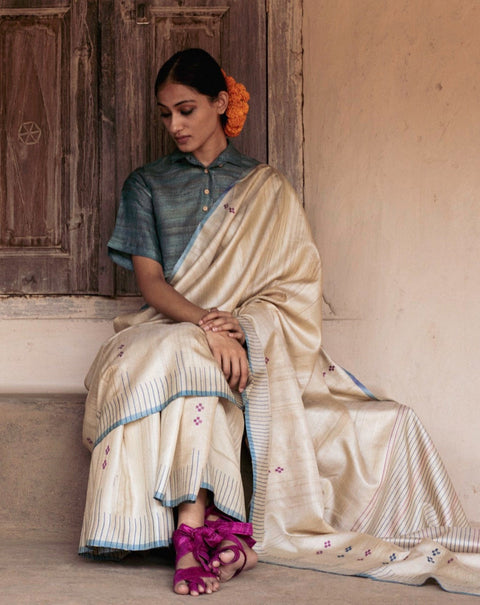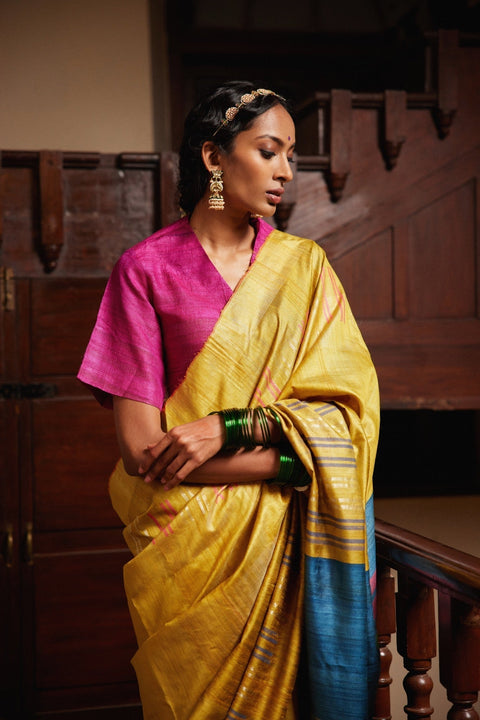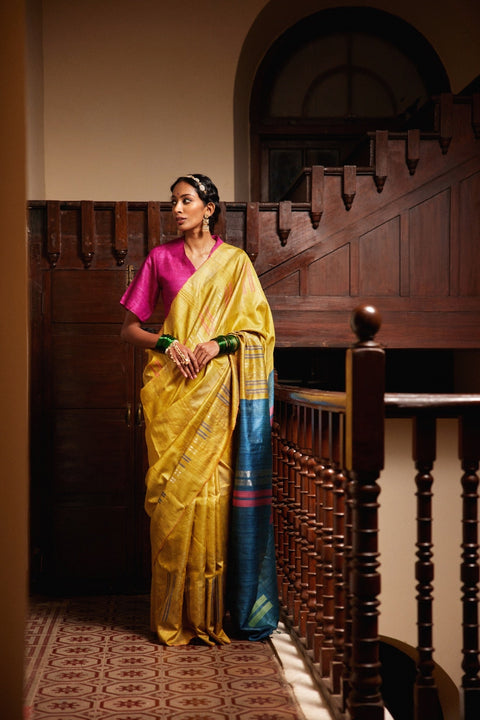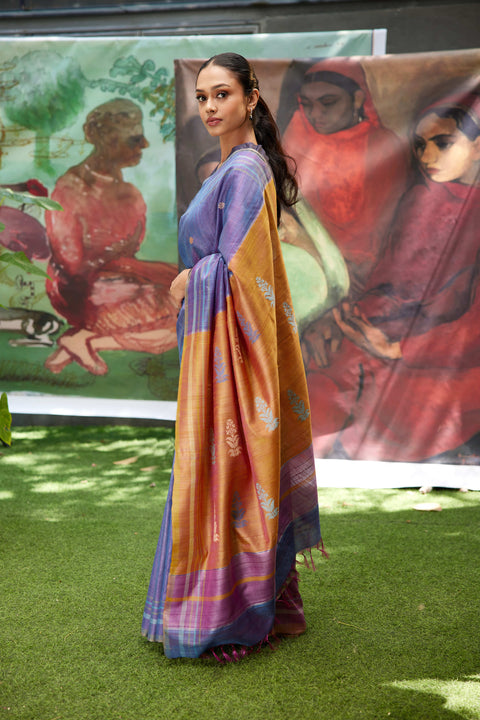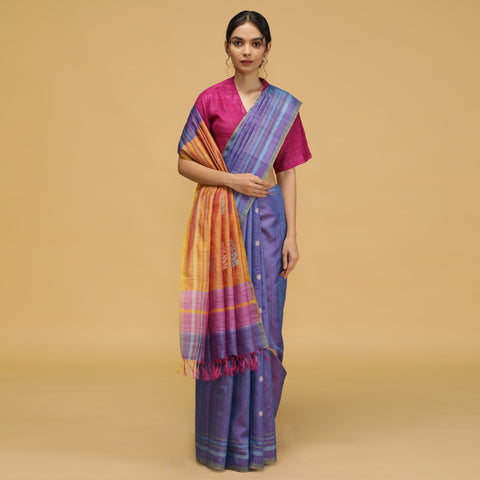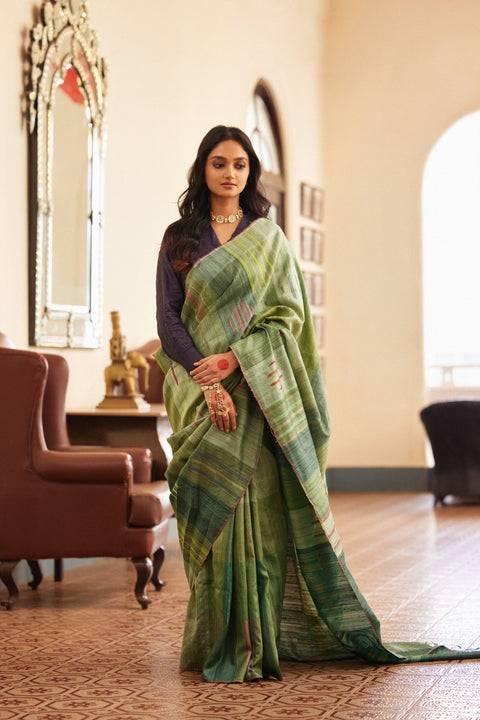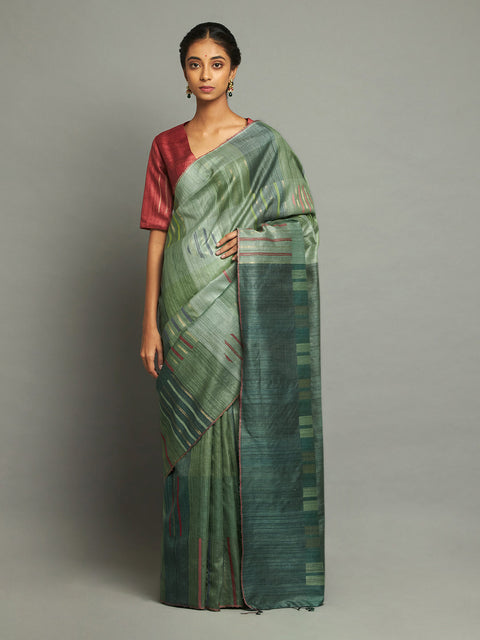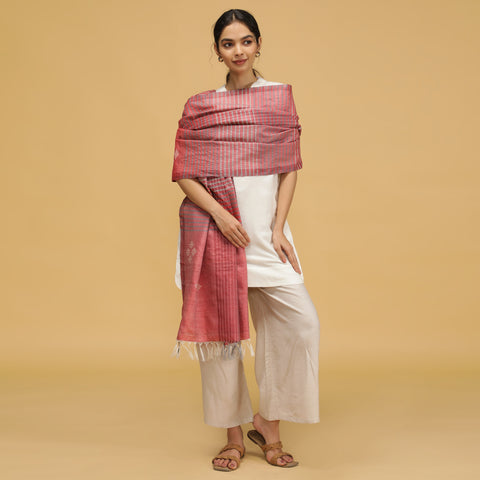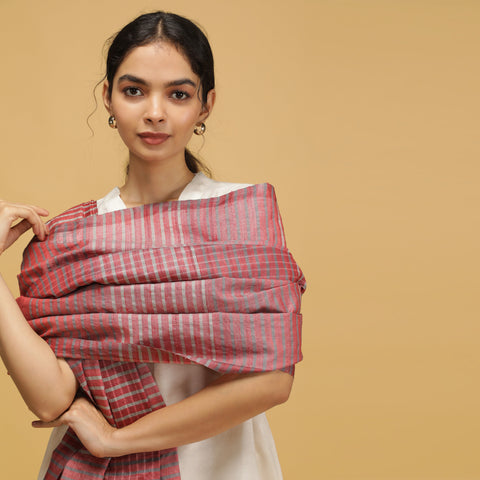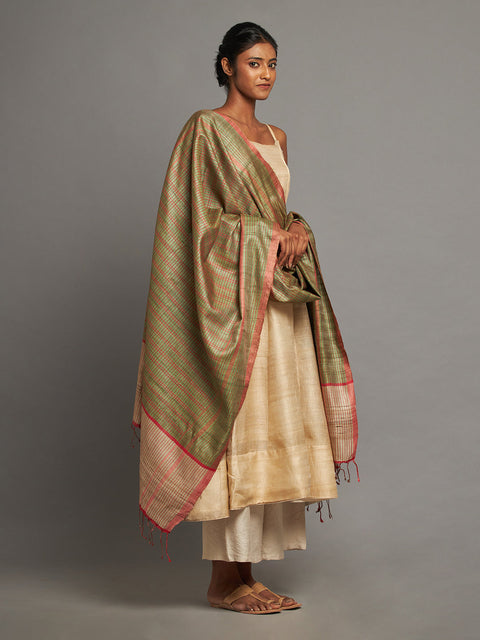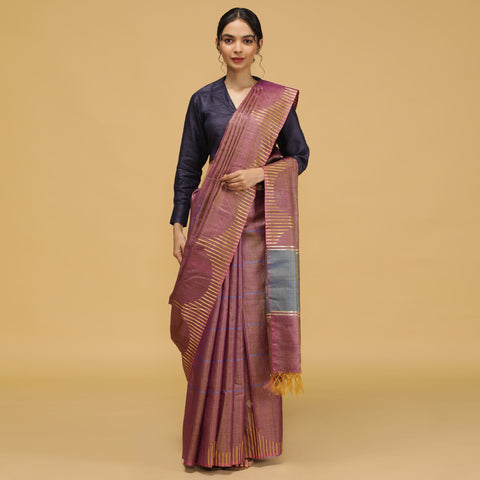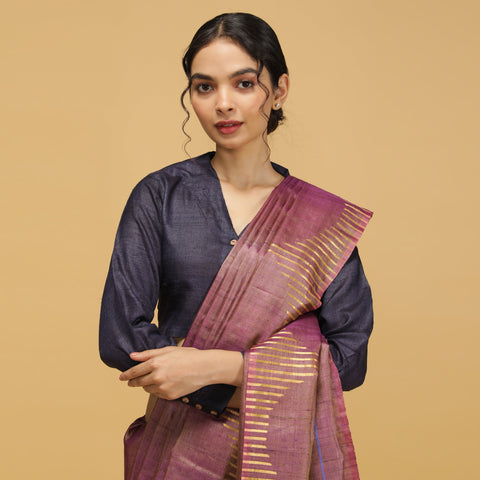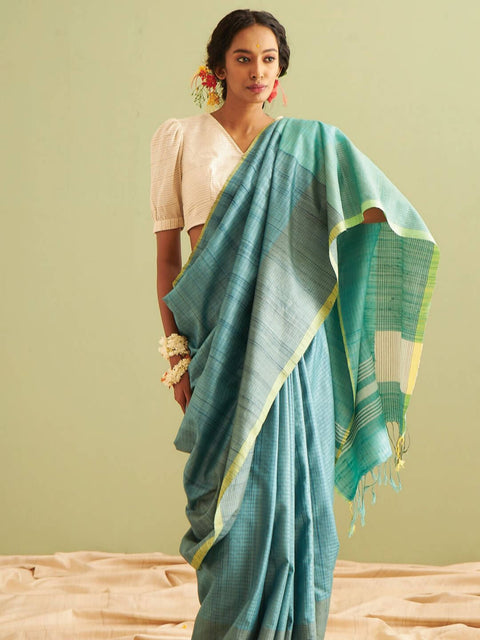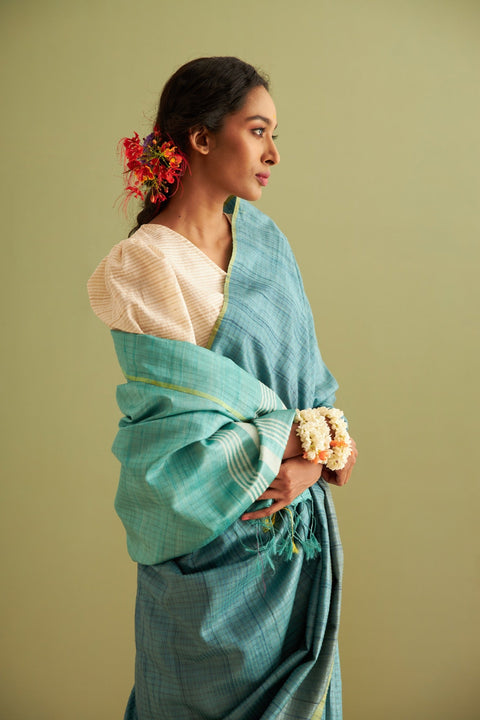
Table of Contents
In the heart of India’s Chhattisgarh state, a centuries-old tradition continues to thrive. A long-lived custom that intertwines nature, culture, and craftsmanship into a fabric that is as enduring as it is elegant. This is the story of Kosa silk, a unique variant of Tussar silk, multifaceted with its texture, origin, and cultural significance.
1. It’s Origins
Kosa silk is produced almost exclusively in Chhattisgarh, from the wild silkworm Antheraea mylitta, which feeds on the leaves of indigenous trees like Arjun, Saja, and Sal. These trees are abundant in the forests of Korba and Champa in Chhattisgarh, regions renowned for their high-quality Kosa silk.
2. Production
An entirely eco-friendly process is used in the production of Kosa Silk. This centuries old method has been practiced by generations of artisans to create pure Kosa silk sarees. Firstly, the rare Kosa silkworms' cocoons are collected from the wild and then boiled to remove the sericin (the protein that binds the silk threads). Then begins the Thigh Reeling process which involves sitting cross-legged on the floor, drawing 5 to 6 filaments on the thigh from cocoons cooked with alkaline material like sodium carbonate, and then false-twisting it. Sometimes ash powder, oil and starch are also used. This meticulous process has been perfected over the centuries to create your favourite pure kosa silk sarees.
3. It’s Texture
Pure Kosa silk sarees are characterized by a unique coarse texture, making it more durable and less prone to wear and tear. This distinctive rough texture arises from several factors like the natural characteristics of the kosa silkworms involved, its production from ancient thigh-reeling processes, the traditional weaving and dyeing methods etc.
4. It’s Colour
While most silk sarees rely on a blend of synthetic and natural dyes to achieve a broader range of colours, Kosa silk possesses a natural golden-brown colour thanks to its purely organic dyes from sources like the Palas flower and lac. The silk is also dyed using natural methods, such as using rusted iron and jaggery to give it a rustic tone while maintaining an elegant appeal.
5. Weaving Techniques
Kosa Silk is woven using traditional handloom techniques, predominantly by the Devangan community in Chhattisgarh. Common weaving patterns include Jaala, Phera, and Khapa. A weaver takes approximately 3 to 5 days to weave the silk. The time taken to fabricate these handloom silk sarees may change according to fabric motif complexity.
6. Versatility
There are different types of silk sarees suited for different types of events. Due to its durability and unique aesthetic, Kosa Silk Sarees are ideal for traditional ceremonies, festivals, and many other special occasions. The simple and timeless nature of these plain tussar sarees also make them suitable for various other occasions from daily silk traditionals to party wear silk sarees like daily wear and casual outings.
7. Cultural Significance
Kosa Silk is deeply rooted in the tribal traditions of Chhattisgarh, with designs often inspired by nature and mythology. It holds cultural importance in the region's festivals and ceremonies. The Dewangan community believes that the first Kosa saree was woven for Goddess Durga for helping the people by killing the demon ‘Maisasur’. These silk sarees are a tool to symbolize this divine intervention.
8. Identification
There are several ways one can spot an Authentic Kosa silk saree. One way is through burning as when burnt, it leaves a black, brittle residue with a burnt hair odor. Another unique characteristic is that Handwoven Kosa sarees commonly feature traditional tribal motifs distinctive to Chhattisgarh.
Conclusion
Kosa silk sarees stand as a testament to the harmonious blend of nature, culture, and craftsmanship. Its unique texture, rich colors, and symbolic motifs set it apart from other silks, making it a cherished fabric that tells a story of tradition and artisanship. With its artistry passed down from generation to generation, these silk sarees continue to captivate and inspire, carrying forward a classic heritage.



